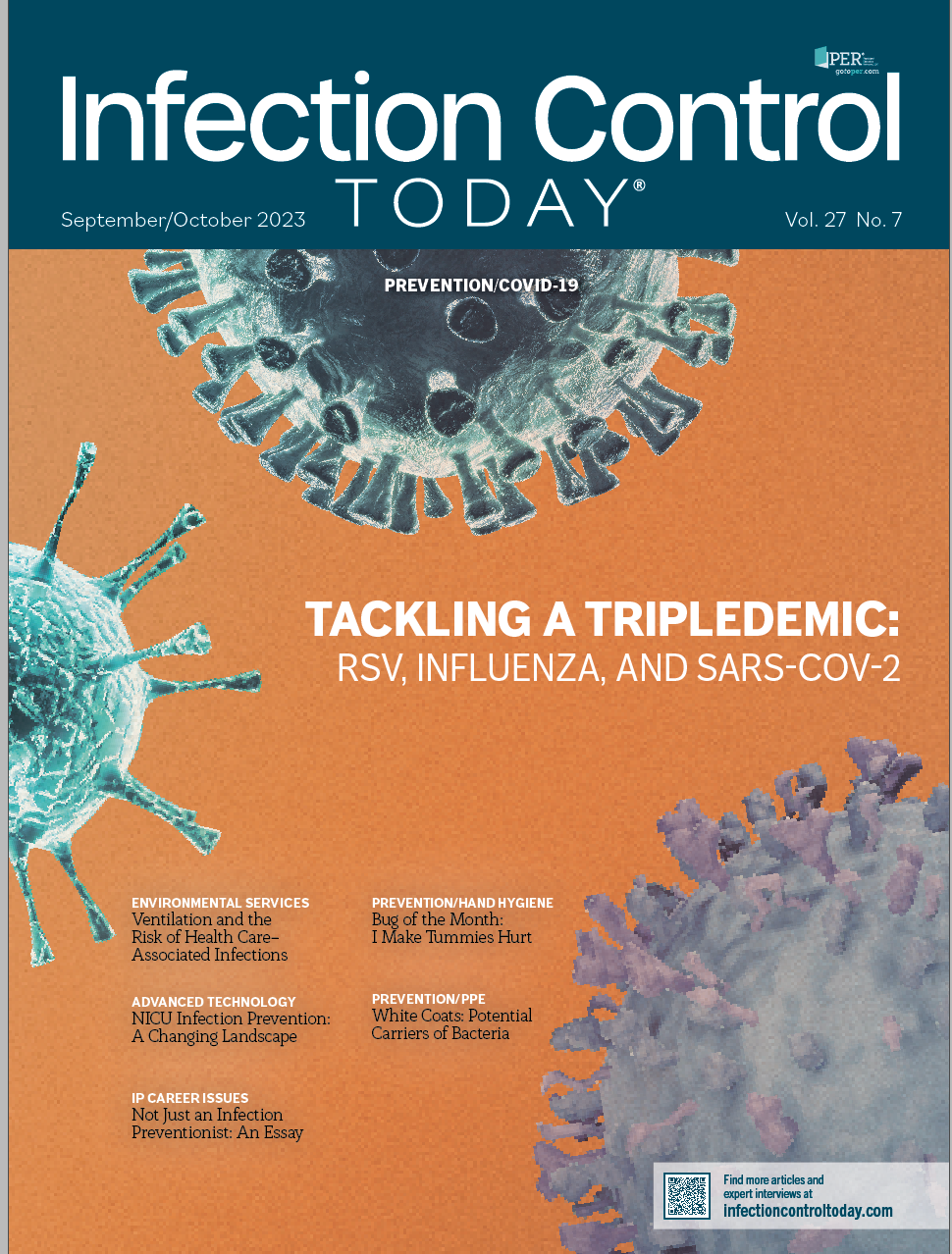Environmental Spread of Emerging Pathogens: AHE Conference Discussion
Doe Kley, MPH, RN, T-CHEST, LTC-CIP, CIC, speaks to Infection Control Today about her presentation and other exceptional presentations at the Association for the Health Care Environment (AHE) Exchange Conference & Solution Center
The Association for the Health Care Environment (AHE) Exchange Conference & Solution Center brings together individuals who are passionate about environmental hygiene in the health care industry. Doe Kley, MPH, RN, T-CHEST, LTC-CIP, CIC, Infection Prevention Fellow for Clorox Healthcare, and adjunct lecturer for the department of education and human ecology at The Ohio State University at the conference and shared valuable insights with Infection Control Today® (ICT®) about her presentation and 2 sessions she found valuable. The AHE was held in Dallas, Texas, from July 31 to August 2, 2023.
ICT: Please summarize your AHE presentation?
Doe Kley, MPH, RN, T-CHEST, LTC-CIP, CIC: The presentation that I gave at AHE was titled “Deepening Your Understanding of Environmentally Spread Emerging Pathogens.” As the title implies, this talk was specific to those emerging pathogens that have the potential to be spread by contaminated surfaces—albeit some more than others. This talk was inspired by the events of the past few years. The 21st century has been impacted by emerging infectious diseases on an unprecedented scale.
I started this talk with a little background into the problem, primarily why we are seeing an increase in novel pathogens (eg, climate change and urbanization). I then reviewed some of the challenges associated with these pathogens, particularly as they relate to environmental services [EVS], including things like our general lack of preparedness, limited treatment options, a tendency to cause outbreaks, and cleaning and disinfecting against pathogens. Because it can be quite complex, I reviewed the EPA’s viral emerging pathogen policy, including a comprehensive overview of EPA’s List Q.
I also reviewed several selected emerging pathogens. These included Candida auris, mpox [Monkeypox virus], carbapenem-resistant organisms, hemorrhagic viral fevers, and seasonal respiratory pathogens. Since we went several years with a nearly nonexistent influenza season, these seasonal pathogens are reemerging. Last year’s influenza season started and peaked a few months earlier than usual. However, the experts at BlueDot Global Surveillance believe that the timing of these seasonal pathogens is progressing back to prepandemic patterns.
Finally, I provided the participants with several resources, including pathogen education sheets on the pathogens I addressed, a cleaning frequency risk assessment, and an emerging pathogen checklist for EVS leaders.
ICT: What are you most excited about at this year’s AHE meeting?
DK: I was excited to see several IPs [infection preventionists] attending the conference along with their EVS teams. Every IP should attend the AHE conference at least once in their career and, better yet, attend with your EVS manager. Another thing that was great is that I am seeing more EVS leaders bringing their supervisors, leads, and even frontline workers to the conference with them.
As for sessions, 2 stood out to me. The first was a session presented by the CDC titled “The Role of Environmental Services in Controlling Outbreaks of High-Impact Pathogens.” This presentation piggybacked nicely on the one I gave. The CDC presenters reminded us that cleaning and disinfection are part of standard precautions.
I also appreciated how the presenters helped participants understand the importance of communication between EVS and IPs, particularly during outbreaks or other emergency situations, such as the presence of an emerging pathogen. They also made this session interactive with “what would you do” scenarios leveraging a real-life outbreak of carbapenem-resistant Acinetobacter baumannii.
The second session was titled “From Survival Mode to Flourishing.” In this highly motivating talk, Benjamin Kenyon, an EVS supervisor in upstate New York, shared ideas for EVS leaders to move outside of their status quo comfort zone to establish a highly engaged team. Mr Kenyon was very much about having the frontline workers be part of the solution to whatever problem is being faced. He also discussed standardization quite a bit, ranging from EVS cart setup to cleaning processes. Another area that is ripe for standardization is product. For example, why have EVS use one bleach manufacturer’s product for Clostridioides difficile rooms and terminal cleans while clinical staff use a different manufacturer’s bleach wipes? Wouldn’t it be easier and make more sense to educate everyone [on] the same product, same instructions for use, and same contact time?
ICT: Anything else you would like to add?
DK: Every IP should consider attending the AHE conference. They do such a great job with the program, ranging from the quality of speakers to the exhibit hall to the fun activities. By attending this conference, IPs will gain an appreciation for the EVS profession that they otherwise may never have.
This interview has been edited for length and clarity. You can watch the video to see the entire interview.
